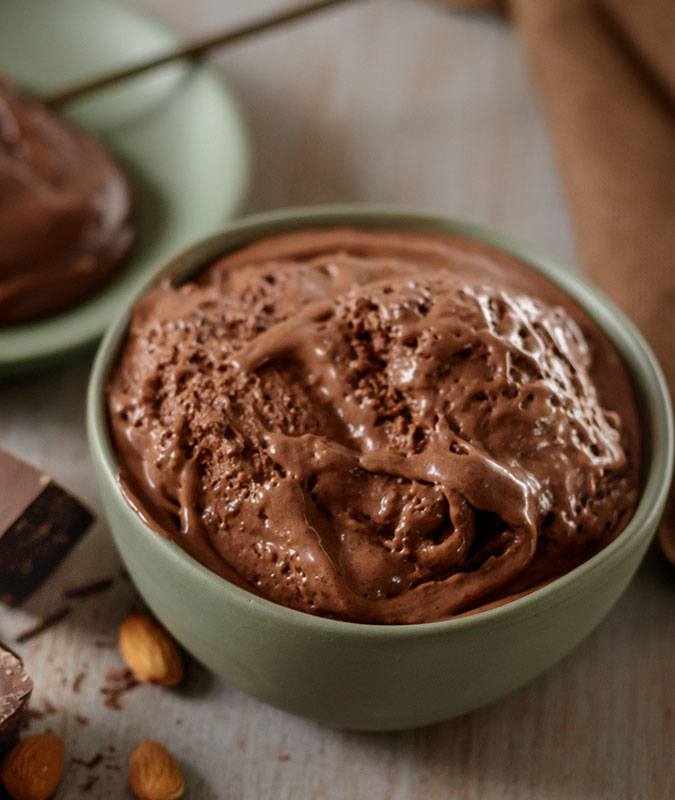Life is good, the weather is warm and a sweet taste is just what you need - so what will it be? A scoop of ice cream, gelato or sorbet? And what's the difference between the three of them? Luckily, we're here to answer all (ok, most) of your frozen-treat-related questions. Bur first, a note on semantics: while gelato is technically just the Italian word for ice cream, it also refers to a very specific type of European-style ice cream, so we use gelato not in the literal sense, but to describe Italian ice cream.
Sorbet, ice cream and gelato are all churned either manually or by a machine, and then frozen. So far, so good. But not so fast! The key to their differences in flavor and texture lies in the speed and intensity of the churching, which results in the different textures that characterizes them. And while they are all frozen treats, they’re all served and stored at different temperatures. Read on to find out more about the differences between ice cream, gelato and sorbet.
What is American Ice Cream?

If you are dreaming with the classic summer dessert for a hot summer night go for the perfect spoonful of cold, creamy comfort. This rich and sweet flavored dessert contains cream or butterfat and usually eggs and is frozen while being churned to create a smooth delicacy. American ice cream needs at least 10% fat to be labeled as such, but most contain up to 25%. It’s made with full-fat cream and milk and egg yolks, for a richer, creamier body.
Ice cream is churned hard and fast because it needs air whipped in to increase volume. The more butterfat an ice cream mix contains, the more air it is able to absorb during churning. Temperature is key, it is best served at around 10°F.
What is Gelato?

Everyone might scream for ice cream, but in recent years, gelato’s popularity has skyrocketed in the United States. The truth is, since it’s so light in fat, it tastes more intense. Actually, the flavor hits you first, not the dairy. It is the pure Italian delight.
Gelato only contains 4% butterfat with 90% milk and no cream at all, and it generally doesn't use egg yolks. It certainly has evolved past its origins of ice and fruit juice or honey to make it the unforgettable treat it is.
Since it is churned at a much slower speed or even by hand, it incorporates less air into the base which makes it denser and softer.
The key to gelato’s super soft texture is the temperature, since it sets to a much warmer temperature -a good 10 to 20 degrees-. That’s the secret to gelato’s perfectly soft, elastic texture and slow-to-melt milkiness. This temperature helps keep it soft and creamy despite its lower butterfat. Gelato feels denser, so the result is rich and satisfying yet refreshing, smoother and often more flavorful.
What is Sorbet?

For a lighter option, reach for the sorbet to cool down. Sorbet leaves the integrity of seasonal fruit intact, leaving fruit taste to shine fully. No heaviness here, no need to go easy on your main course, just a sweet treat. Cool and refreshing like no other. Sorbet has a much simpler preparation overall; the sugar syrup and the water are just churned in an ice cream machine with fruit or a
fruit puree
Sorbet is basically fruit, water and glucose, without any cream or milk, which means that you can basically turn any fruit or fruit puree into a fresh, full flavored, sweet sorbet. If you want a smoother and less icy sorbet, corn syrup will work. Sugar plays an important role apart from just sweetening the fruit juice. It is actually responsible for its texture and structure. Too little sugar and sorbet turns icy and slushy, but if the sugar level is right, the sorbet will taste creamy and melt evenly across your mouth.
The bottom line:
Ice cream has a buttery fullness and fluffier texture, while gelato’s texture is milkier and less creamy. What about sorbet? Sorbet has a flavor that’s more pure, intense, and it feels dense but not heavy (sorbet is in fact leaner).
A Note on Ice Cream Stabilizers and Emulsifiers:
These are the most controversial part of ice cream making. Traditionalists denounce them thinking everything should be “natural”, and molecular gastronomes thank them for scientific solutions to their problems. The truth is most of them are natural, and when used correctly, they can help you extend the life and improve the quality of your ice creams. Read more about Ice Cream Stabilizers and Emulsifiers here.
Shop Gelato and Ice Cream Ingredients here >
Ice Cream Recipes!
Looking to give homemade ice cream, gelato and sorbet a shot? You can cook delicious ice cream - like the ones pictured above - easily with our recipes! Click to view our amazing ice cream recipes!